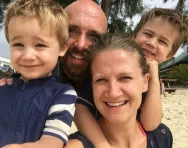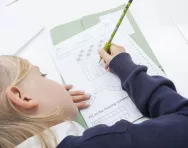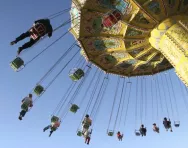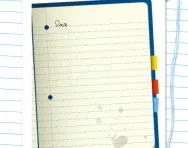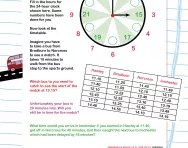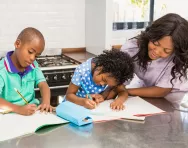Important update from TheSchoolRun
For the past 13 years, TheSchoolRun has been run by a small team of mums working from home, dedicated to providing quality educational resources to primary school parents. Unfortunately, rising supplier costs and falling revenue have made it impossible for us to continue operating, and we’ve had to make the difficult decision to close. The good news: We’ve arranged for another educational provider to take over many of our resources. These will be hosted on a new portal, where the content will be updated and expanded to support your child’s learning.
What this means for subscribers:
- Your subscription is still active, and for now, you can keep using the website as normal — just log in with your usual details to access all our articles and resources*.
- In a few months, all resources will move to the new portal. You’ll continue to have access there until your subscription ends. We’ll send you full details nearer the time.
- As a thank you for your support, we’ll also be sending you 16 primary school eBooks (worth £108.84) to download and keep.
A few changes to be aware of:
- The Learning Journey weekly email has ended, but your child’s plan will still be updated on your dashboard each Monday. Just log in to see the recommended worksheets.
- The 11+ weekly emails have now ended. We sent you all the remaining emails in the series at the end of March — please check your inbox (and spam folder) if you haven’t seen them. You can also follow the full programme here: 11+ Learning Journey.
If you have any questions, please contact us at [email protected]. Thank you for being part of our journey it’s been a privilege to support your family’s learning.
*If you need to reset your password, it will still work as usual. Please check your spam folder if the reset email doesn’t appear in your inbox.
Taking your child on a learning adventure

For many children, learning is easier when they’re immersed in an experience rather than sitting at a desk. And while removing your child from school and taking them on an extended educational holiday might sound daunting, it can be an unforgettable experience, full of learning opportunities.
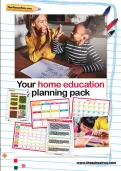
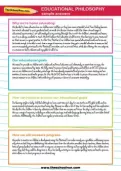
Free home education planning pack & resources
- Guidance, templates & advice
- Practical tips from experts and parents
- How to establish a routine and set goals
Teacher Sue Cowley, author of Road School (£9.99, Crown House), took her two children out of school for six months to travel around Europe, visiting landmarks including Pompeii, the Colosseum and the Rijksmuseum. We asked her for her top tips for taking your child on an educational trip.
Withdrawing your child from school: the legalities
As a parent, you have the right to take your child out of school, as long as you’re providing them with a full education instead. If you want to take your child travelling, it usually means deregistering them from school by writing to the headteacher. Bear in mind that they may not get a place at the same school when you return.
In some cases, your child’s school might grant them extended leave of absence. It's very unlikely that you'll be able to get this approved, but it’s worth discussing it with the headteacher to see if they’ll agree to authorise it. This would mean that your child’s school place would be held for them.
Planning your travels
There are lots of things to consider when you’re working out where to go on your educational trip. Some families like to have a definite schedule covering where to visit and when; others prefer to go with the flow and see where their travels take them.
When you’re planning, keep in mind your budget, the key places you want to visit, the weather, the most logical route from one place to the next, and any special events that you want to take in. ‘One of our priorities was seeing the Last Supper [Leonardo da Vinci’s famous painting, in Milan], so we timed our trip around that,’ says Sue. ‘We were also influenced by the cost of accommodation: we tried not to stay in expensive places for too long.’
Don’t forget that planning the trip is a learning experience in itself for your child. Looking at maps and timetables, and working out journey times and the most economical way to travel, will develop their skills in many areas, including maths and geography.
Visiting museums, galleries and other sites of interest
There are various different ways to make sure your child gets the best from the places you visit. Many museums, galleries and other places of interest have guidebooks, audio tours and worksheets to fill in, and these can help you structure your visit.
However, Sue warns against being led purely by worksheets or activity trails. ‘It was important to us to let the children follow their interests, and they were more fired up when they had the freedom to explore,’ she explains. ‘I didn’t want our visits to be like school trips.’
Encourage your child to prepare for their visits by using guidebooks and websites to find out about what there is to see and do, and make notes about the things they want to look at.
Following your child’s interests
To ensure your child gets the most out of your learning adventure, tailor your itinerary to their interests. ‘Keeping them engaged is the key to making sure they’re learning from their experiences,’ says Sue. ‘For example, my daughter was obsessed with Leonardo da Vinci, so we took her to museums and galleries where she could see his work.’
Keeping a record
An educational trip is usually a once-in-a-lifetime experience, so it pays to make sure your child keeps some sort of record of their travels so they can reflect on it when they’re older. This could be by writing a diary, blogging, vlogging, taking photos and videos, scrapbooking – or a combination of these.
‘One of my only stipulations in terms of “work” was that the children had to sit down every evening and write at least one A4 page about their day,’ Sue says. ‘As well as making sure they had a record of what they’d been doing, it helped to have that bit of structure and routine.’
Using resources
The amount of resources you can take with you on your travels will depend on how you’re getting around; clearly, it’s a lot easier to take things with you if you’re taking your car rather than flying or using public transport.
‘We took our own car around Europe, so we were able to take one whole suitcase full of books: 50 per cent fiction and 50 per cent non-fiction,’ says Sue. ‘Once we’d finished with a book, we left it behind so we could replace it with something new.’
If you’re restricted with luggage space, loading a Kindle or similar e-reader with resources for your child’s studies is a good alternative to taking books.
Resources specific to the places you’re visiting can usually be picked up on site. ‘Most of the places we visited had leaflets or guidebooks, as well as excellent shops selling books and other resources,’ Sue says.
Make sure you also have a way of accessing the internet to help your child’s learning. This could be by booking accommodation with internet access, using wifi cafes and other hotspots, or finding a phone contract that includes overseas data.
Keeping up with key skills
How you organise your child’s learning while you’re travelling is a personal decision. You might decide to use the National Curriculum to follow what they’d be doing at school, take out a subscription to TheSchoolRun and download worksheets, invest in some workbooks for them to fill in, or put formal learning aside and focus on educational experiences. ‘We did a lot of mental maths in real-life situations like working with currencies and timetables,’ says Sue.
Whatever approach you choose, bear in mind that at some point, your child is likely to go back to school, and so needs to keep up with what their peers are doing.
Structuring your time
Although by law, you have to provide your child with a suitable full-time education, how you structure their learning time is up to you. Some families have formal working hours, while others fit learning in as and when it suits them.
‘We had a flexible approach, and often spent a whole day, into the evening, visiting a place and cramming learning in,’ Sue explains. ‘But we did keep weekends and school holidays free so the children had some definite down time.’
Making sure you get along
One of the biggest worries for any parent considering a learning adventure is how you’ll all get on with each other. ‘It can be challenging in terms of family relationships, because you’re spending 24 hours a day in each other’s company,’ Sue agrees. ‘For us, it was important to make sure we all got a break from each other – so, for example, sometimes we booked two hotel rooms rather than one family room so we could split off.
‘But you know your family and what will work for you. I’d encourage anyone to just go for it: it was an amazing experience for my children, and did wonders for their confidence, independence and ability to cope with challenge and change.’
